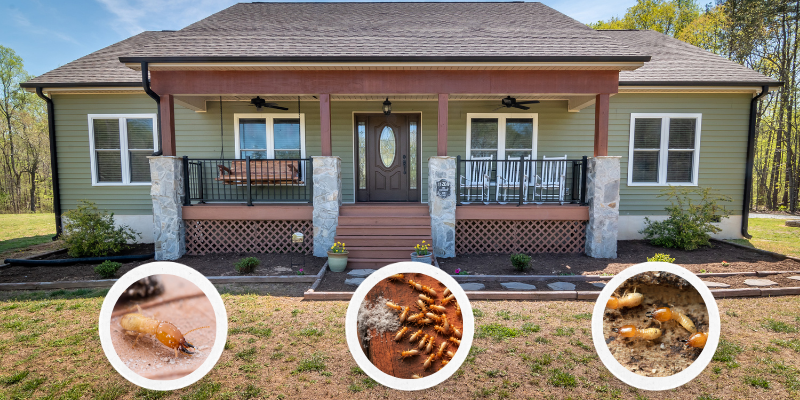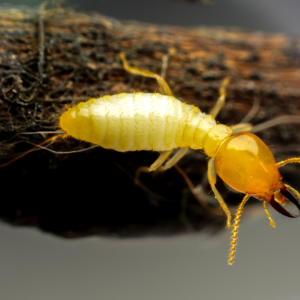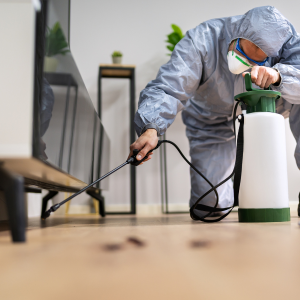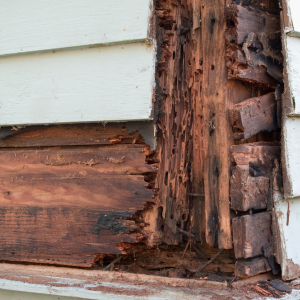
It might be hard to deal with termite damage right before you offer your house. For a successful sale in a market as competitive as St. Paul’s, you need to know what problems termites might cause and what you can do to fix them. This detailed article looks at the specific problems that Minnesota homes have with termites and offers useful tips for fixing and avoiding damage. You’ll discover how to sell your home with confidence, keep its worth, and make the process go smoothly and without fear. This article gives you useful information that will help you take charge of the issue and move forward with peace of mind, from identifying early warning signals to looking at treatment choices.
What You Need to Know About Termite Infestations
Termites are a nightmare for anyone who owns a home, especially if you’re about to sell it in St. Paul, MN. To safeguard your investment, you need to know how these pests work and what damage they can do. In this part, we’ll talk about what termites are, how to tell if they’re around, and why it’s so crucial to find them early through professional inspections. If you know how to spot and deal with termite activity early on, you’ll be better able to safeguard the value of your property and show it to potential purchasers with confidence.
What are termites?

Termites are tiny bugs that eat wood and can do a lot of harm if they aren’t dealt with right away. People sometimes mistake these quiet destroyers for ants, but they are much more than a nuisance. They may seriously damage the structure of your home. A single colony can have millions of termites that work together quite well. There are a lot of different types, but the most prevalent ones in St. Paul are drywood, dampwood, and subterranean termites.
Subterranean termites are the most dangerous because they live in the ground and make mud tubes to get to wood without being seen. Drywood termites, on the other hand, don’t need to touch the ground and can live in dry hardwood flooring, furniture, and beams. It’s important to know what kind of termite you’re dealing with because each variety needs a different way to be treated and stopped.
A queen and a monarch start a colony by making a new nest and having babies. The queen can lay thousands of eggs each year, which helps the colony grow quickly. Most of the damage is done by worker termites, which are the ones that feed the colony. They eat cellulose, which is found in wood, paper, and even cloth. This undermines the structure of your home over time, and if you don’t fix it, it can cost a lot of money.
Homeowners need to keep alert to fight termites successfully. Regular inspections can find early indicators of an infestation before it does a lot of damage. By learning about how termites act and what draws them in, you may come up with specific ways to keep them away. Keep in mind that termite problems can diminish the value of your house on the market, not only cause damage. If you think you could have termites, call a pest control expert straight once. Taking action early can make a big difference in keeping your money safe.
Signs that termites have damaged something
Finding termite damage early can help you avoid costly repairs and headaches in the future. One of the first symptoms that anything is wrong is the presence of wings that have been thrown away near windows or doors. These wings are from swarmers that have come into your home to create new colonies. Another sign that something is wrong is when mud tubes start to show up on walls, beams, or foundations. Subterranean termites make these pencil-width tubes as safe paths.
Another symptom is wood that is damaged or sounds hollow. Termites consume wood from the inside out, leaving only a thin layer on the outside. You can also see paint that is bubbling or cracking. This can happen when termites get into the walls and cause moisture to build up. Small holes in drywall or wood constructions could be where termites are leaving their tunnels.
Severe infestations can cause floors or ceilings to sag, which is a warning that the structure is seriously compromised. Water damage can look like warped wood or blistering floorboards, but they could potentially be signs of termites. If you hear soft rustling sounds inside your walls, it could be termites eating or migrating through wooden supports.
Regular inspections and prompt fixes are the greatest ways to protect yourself from these problems. Be honest about any past termite damage or repairs when you sell your house. Buyers value honesty, and being open and honest with them creates trust and keeps things from getting messy later on. Taking care of termites before they become a problem not only protects your property, but it also makes it more attractive and valuable on the open market.
Checking for and fixing termite damage
Dealing with termite damage while preparing your St. Paul home for sale can feel overwhelming, but the right approach makes all the difference. Start by scheduling a thorough termite inspection, then determine the best way to treat and repair any damage. Understanding the process ahead helps you preserve your property’s value and ensures a smoother selling experience. At the same time, if you’d rather skip the repairs, we buy houses in St. Paul — even those with termite damage.
What a Termite Inspection Will Show You
The first thing to do to find out how bad the damage is is to have a termite examination. Licensed inspectors will look at both the inside and outside of your home, paying special attention to areas that are more likely to have problems, like basements, crawl spaces, attics, and wooden framing. They check for evidence of infestation, such mud tubes, hollow timber, broken beams, and other things that are easy to see.
It’s a good idea to clear away clutter, move furniture away from walls, and trim plants around the property so that the inspector can get to everything. Inspectors can find activity that is hidden behind walls with moisture meters or infrared cameras. Even if you can’t see any termites right now, a specialist can find damage that has already happened or situations that could attract more termites in the future.
You will get a full report with all the information about the findings, including any obvious damage, possible dangers, and suggestions for how to fix or cure the problem. This paperwork is useful when talking to purchasers since it indicates that you are open and honest and that you have done the right thing to fix the situation.
Good Ways to Treat Termites

Once you know for sure that termites have damaged your home, you need to choose the correct remedy. The most frequent way to keep termites out of a home is to use chemical barriers, which means putting termiticides in the soil around the home. This approach works exceptionally well against subterranean termites that are abundant in St. Paul.
A baiting system is another approach that works. Termites are drawn to bait stations set up around the property. They then bring the poisonous bait back to the colony. This strategy gets rid of the whole population over time. It is better for the environment and less invasive than other therapies.
For isolated infestations, such as drywood termites, spot treatments or heat treatments might be used to kill them in certain regions. Spot treatments put termiticides directly into the wood that is infested, while heat treatments boost the temperature in the areas that are infested to kill termites without using chemicals.
Long-term protection depends a lot on prevention. Termites don’t like it when wood is dry, access points are sealed, and there is good ventilation. Treatment works best when you also do regular inspections and maintenance. This keeps your home safe and keeps its market value high. Showing that your home has been treated by a professional can also make potential buyers feel better about your property and give them more faith in it.
Ways to Sell a House That Has Termite Damage
You can still sell your property in St. Paul even if it has termite damage. You can either fix it up and sell it on the open market or sell it “as-is” to someone who pays cash. Depending on your goals, timeframe, and budget, both options have pros and cons.
Option 1: Putting your home with termite damage up for sale on the open market
If you’re ready to spend time and money on renovations, selling on the open market can get you more money. Being open and ready is the key. Hire a trained inspector to look at the damage, fix it, and keep track of all the work that was done. Buyers like paperwork that indicates the issue has been fixed in a professional way.
Making cosmetic and structural repairs, like repairing broken wood or flooring, can make a major impact in how appealing a place is. Once the repairs are done, tell the buyer about the home’s history with termites and the steps that were taken to fix the problem. To make buyers feel more confident, add images and inspection reports of the property before and after.
Professional staging may make the home look even better, which can help potential buyers focus on its best features. To get people to notice you online, you need high-quality photographs and informative descriptions. You may also provide a termite warranty or a pest-control service package to get more people interested in buying. These can give new homeowners extra peace of mind.
If you are honest, keep good records, and display the home well, selling an old house that used to have bugs on the open market can be easy and successful.
Option 2: Sell your house “as is” to a cash buyer who has termite damage.
If you don’t want to deal with repairs and the cost of them, selling to a cash buyer can be a quicker way to go. Cash purchasers, who are usually investors or flippers, usually buy homes “as is,” which means you don’t have to fix anything or stage the property.
This choice lets you close quickly, often in just a few days, without having to worry about buyer financing or long inspections. Even though cash bids are frequently lower than market value, many sellers think the speed and ease are worth it.
Put the property on investment websites and local real estate networks to get cash buyers interested. Focus on important things like the neighborhood, the size of the lot, or the possibility of remodeling. It’s still crucial to be honest about the termite damage. It establishes trust and can even attract investors who want to buy a house, patch it up, and sell it.
Working with a real estate professional who specializes in cash sales might make negotiations and paperwork move more smoothly. Selling “as is” can help you move on swiftly without having to worry about repairs or the unknowns of the open market.
Pricing and selling a house that has had termites in the past
Finding the right price and marketing strategy for a home that has previously had termites can be challenging. To sell your house fast in Minneapolis, you’ll need to balance showcasing the property’s best features and value while addressing necessary repairs and potential buyer concerns. Being transparent and upfront about the home’s condition helps build trust, attract serious buyers, and ensure a smooth, successful sale.
Finding the Right Price-Value Balance
To set the right price for your home, you need to think about both the local market and the state of your property. A expert appraisal can help you figure out a reasonable price, especially if you include the cost of repairs and pest management. To see how termite history could affect value, compare your property to other homes in St. Paul that are comparable to it.
List the improvements and efforts made to stop the infestation from happening again. People who want to buy your house will be happy to know that you have taken steps to secure it. Use bright, high-quality images and other compelling visuals to show off the best parts of your home.
Giving them rewards can also help. A transferable termite warranty or a year of pest control services that have already been paid for might soothe buyers’ worries and make the property seem more valuable. If you work with a real estate agent who knows a lot about properties that have had pest problems, you can be confident that your listing is in a good position in the market.
Telling potential buyers about the history of termites
When selling a home that has had termites, you must be honest. Minnesota law says that you have to tell people about any pest damage you know about. But being open about things also creates trust and helps avoid problems later.
Give copies of inspection reports, invoices for treatments, and proof of any repairs to the building. This proof shows that the issue was dealt with in a responsible and professional way. When exhibiting the house, stress the procedures that were taken to keep bugs from coming back, like frequent inspections or chemical barriers.
Telling the tale of how the home has been able to survive and be well cared for, including its experience with termites, can actually help you. When buyers discover that a seller has been proactive and careful about taking care of the home, they frequently feel better about buying it. Clear communication may turn doubt into confidence, which can be the difference between completing a sale successfully and not.
Protect your investment by keeping termites out in the future.
The greatest method to protect your house and keep its worth is to stop problems from happening in the first place. Knowing what draws termites in and taking efforts to keep them away will protect your investment and make your house more appealing to prospective buyers.

What draws termites to your home?
Termites are attracted to three major things: food, water, and a place to live. They eat cellulose from wood, and they do better in wet places. Homes with timber that hasn’t been treated or is rotting, pipes that leak, or bad drainage are easy targets.
Check your home’s foundation, crawl spaces, and attic on a regular basis. Make sure these places are dry and have good air flow. Quickly fix leaks and make sure that water drains properly around the property. Termites also like dark, hidden places, so checking behind walls, in basements, and near foundations every so often will help you find them early.
Landscaping is important too. Don’t put mulch or firewood near the base of your home, and keep a space between the soil and the wooden siding. These modest changes make your home much less appealing to termites.
How to Keep Your Minnesota Home Safe
Regular inspections and wise upkeep are the first steps to keeping your St. Paul home safe. Set up a regular pest control plan and get your home checked for termites every year. Using termiticides or putting in bait systems can keep termites away for a long time.
Make sure the area surrounding your foundation is dry and free of trash. Cut down plants and make sure that gutters and downspouts send water away from the house. When you remodel, think about utilizing materials that termites can’t chew, like treated wood or concrete.
Beneficial nematodes and other natural deterrents can also help keep termites from living in your yard. Using these approaches together makes sure that you have greater, layered protection against future infestations. You can keep your property’s structural integrity, market worth, and peace of mind for years to come by taking care of it and being on the lookout for problems.
In conclusion
To sell a home in St. Paul, MN with termite damage, it’s important to stay transparent, plan carefully, and make informed decisions. By having professionals inspect the property, addressing any issues, and clearly communicating your intentions, you can protect your investment and build buyer confidence. Whether you choose to repair and sell traditionally or opt to sell your house as-is for cash, understanding your options empowers you to move forward confidently. Stay proactive and informed, and you can turn a potential setback into a smart real estate opportunity. K&G Investments buys houses as-is for cash — reach out today!
FAQs:
What are the most common symptoms that termites are present?
Look for wings that have been thrown away near windows, mud tubes along walls, hollow wood, bubbling paint, small holes in drywall, and floors or ceilings that sag.
What can I do to keep termites out of my St. Paul home?
Make sure to have frequent inspections, patch any leaks, make sure the drainage works properly, and keep wood from touching the ground directly.
What are good ways to get rid of termites?
Chemical barriers, bait systems, and localized treatments like heat or spot treatments are all effective ways to get rid of pests, depending on the type of infestation.
Do I need to tell buyers about past termite problems when I sell my house?
Yes. Always be honest about past infestations and keep records of repairs and treatments. Buyers want verification that the problem has been fixed and honesty.
How do you sell a house that has termite damage?
Get a professional to look at the house, fix any major problems, set a fair price, issue warranties, and be honest about the house’s qualities while you sell it.
Helpful St. Paul Blog Articles
- Can Heir Property Be Sold in St. Paul, MN
- How Long After an Appraisal Can You Close in St. Paul, MN
- How to Sell a House in Bankruptcy in St. Paul, MN
- Selling My Parents House in St Paul, MN
- Sale Of A Rental Property in St. Paul, MN
- Selling A House With Termite Damage in St. Paul, MN
- Selling A House To A Family Member in St. Paul, MN
- Sell a House in St Paul MN When Relocating

